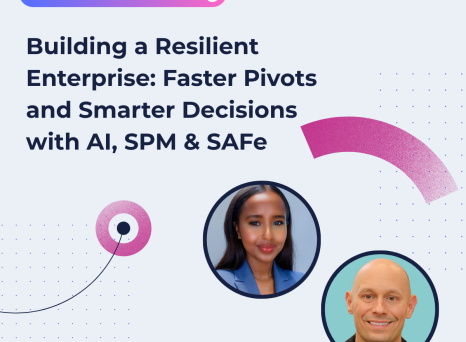Agile Illustration by Lynne Cazaly
Agile methodologies, plus words like scrum, Kanban, lean, are having a moment. It doesn't take much to notice that these buzzwords appear in every project management article, thinkpiece and webinar around - particularly in the IT and software industries.
Put simply, in these industries, agile software development consists of developing and releasing the software in small increments and in an iterative manner, by considering the feedback of the end user/customer and adapting quickly to any changes.
Incremental software development methods have existed ever since the 1960s. But it is in 2001 that the first use of the word “Agile” was coined.
It is based on the Agile Manifesto released in February 2001, a collection of Agile 'principles' put forward and agreed on by experts in the industry. It prioritises:
- Individuals and interactions over processes and tools
- Working software over comprehensive documentation
- Customer collaboration over contract negotiation
- Responding to change over following a plan
Scrum, Kanban and Extreme programming are some of the frameworks that come under the Agile methodologies umbrella. Ever since the release of this manifesto, Agile methodologies have not only contributed to IT project management but have also permeated into non-IT or non-software projects. In fact, the truth is that many interesting ideas in Agile methodologies come from outside the IT or software development industry entirely.
For example, the word 'scrum' was coined as a term in product development, where it was commonly used before being adopted and used heavily in the software development industry. Lean and Kanban methods were actually used to manage production lines in the auto industry, especially at Toyota, who pioneered this method by studying supermarkets. Thanks to the flexibility and simplicity of these methods, which are their greatest strength, they caught on in other industries, particularly software development. Hence agile methodologies are not the uniquely properties of the software domain!
It makes sense then, that they can also be applied elsewhere. Even if you are working in the creative industry (such as a communications, design or a PR agency), or in a marketing department, sales, or even managing programs in a government institution, Agile methodologies can definitely be applied to make your professional life easier. But how?
You can use the following key agile practices which stem from the agile manifesto in general and from the main agile frameworks in particular:
- Create a list of priority work items (also called a backlog in the scrum framework). Creating a list of items will help you and your team decide on which items to work on.
- Write tickets or short descriptions in a few sentences (also called user stories in the scrum framework) about the work to be done.
- User stories are often written on index cards or sticky notes and arranged on walls or tables to facilitate planning and discussion. This will allow you and your team members to agree on how to accomplish the work items mentioned in the list.
- Display your boards or charts on walls so that the team and stakeholders can not only track the progress but also have a global view of the work to be done. For example, you can inspire from the Kanban board which includes columns such as 'to do', 'in progress', 'on hold' and 'done'. You can list the item to be accomplished in the 'to do' column, and then move it forward as the work progresses according to the situation.
- Set a short period (usually 2 to 3 weeks) to do the basic unit of work (user stories) and it done in the allotted time. In the Scrum framework, we use the word 'sprint' which is basically a short and sustainanble burst of work activity.
- Hold a daily stand-up meeting of 5-10 minutes where everyone on the team can check progress, discuss challenges and find solutions. One team member should talk at a time, so that everyone listens. The speaker can be given a prop or an item to hold while speaking so that other team members know it is their turn. Daily stand-up meetings allow discussions to be concise and to the point.
- Organize retrospective meetings when the sprint or the set period is completed, to discuss what went well, what didn't, and what lessons have been learned.
These methodologies can help you improve collaboration and communication among your team members. While they are used in a very precise framework within tech teams, non-IT or non-tech departments can tinker with them and iterate the practices to adapt them in accordance with your own practices.
Sources:
https://www.infoq.com/articles/agile-non-it


